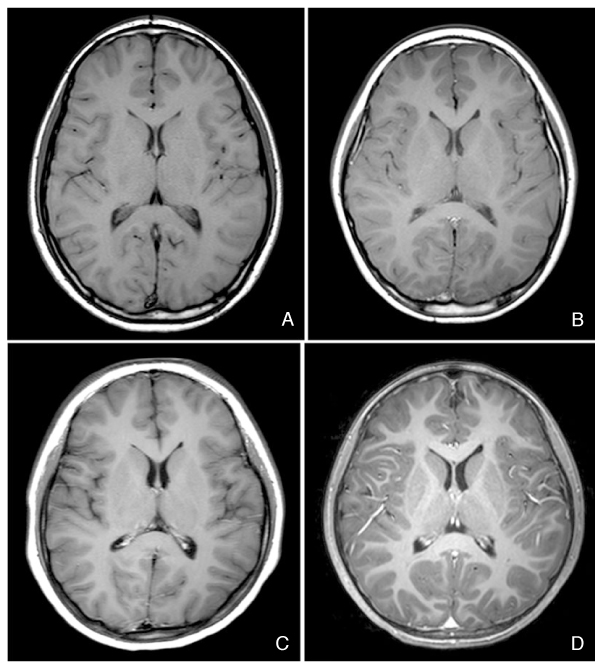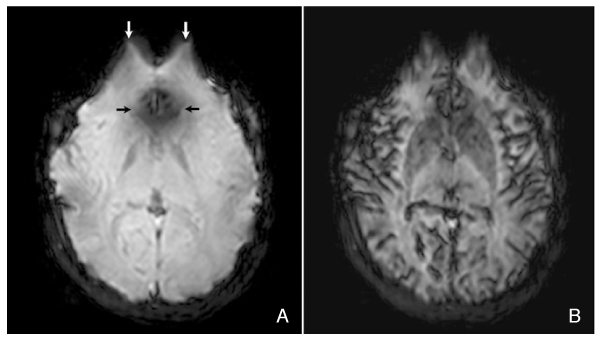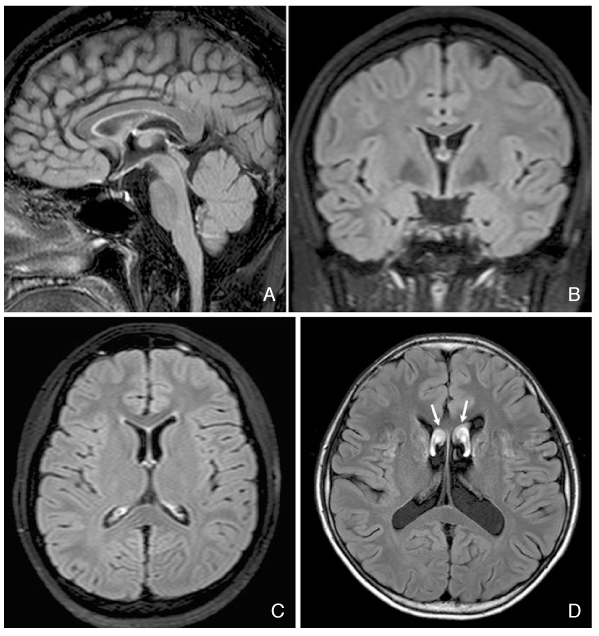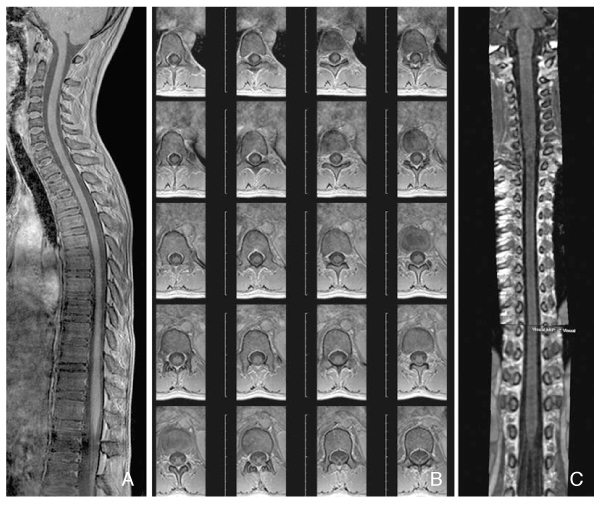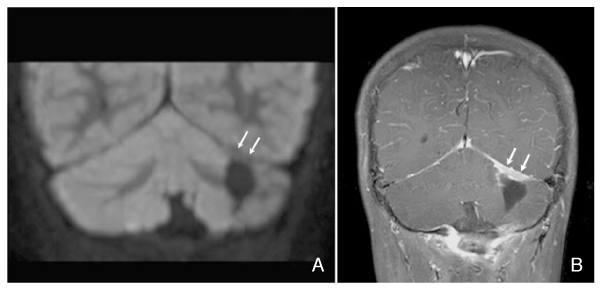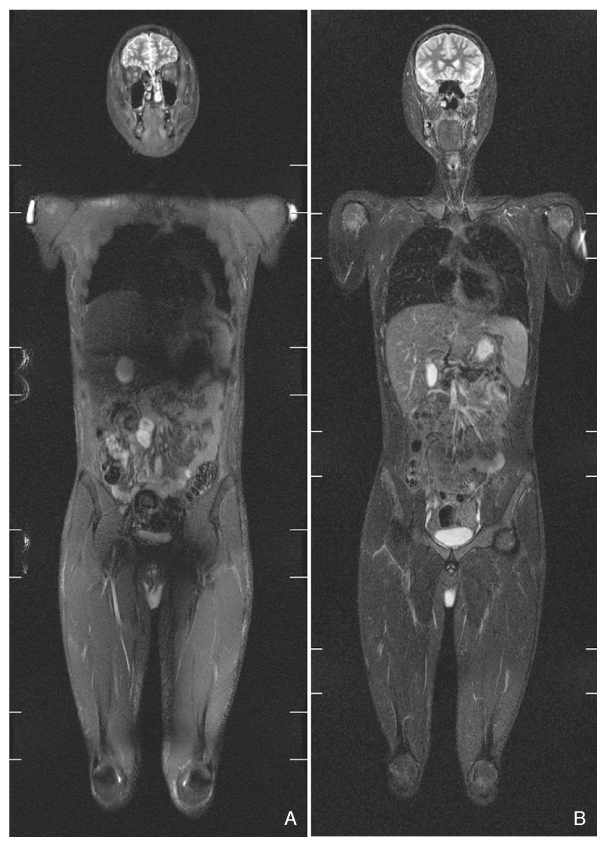J Korean Med Assoc.
2010 Dec;53(12):1093-1102. 10.5124/jkma.2010.53.12.1093.
High field strength magnetic resonance imaging in children
- Affiliations
-
- 1Department of Radiology, Asan Medical Center, University of Ulsan College of Medicine, Seoul, Korea. hwgoo@amc.seoul.kr
- KMID: 2064725
- DOI: http://doi.org/10.5124/jkma.2010.53.12.1093
Abstract
- Thanks to the benefits of 3 tesla (T) magnetic resonance imaging (MRI), its clinical use is increasing in pediatric patients. However, technical considerations and clinical applications of 3T MRI have not been comprehensively reviewed. Potential advantages of 3T imaging over 1.5T imaging include a higher signal-to-noise ratio, higher contrast-to-noise ratio, higher spatial resolution, and shorter scan time. These merits are easily achieved in neuroimaging, musculoskeletal imaging, and pelvic imaging, while body imaging is substantially limited by dielectric shading and an increased specific absorption rate (SAR) owing to B1 inhomogeneity and increased susceptibility artifacts. T1 and T2 relaxation times as well as chemical shifts are influenced by the higher magnetic field strength. SAR issues and dielectric shading of 3T body MRI are less problematic in pediatric patients having a smaller body size. Improved image quality can be achieved by using parallel imaging, the shortest echo time or echo train length, the highest receiver bandwidth, and improved local shimming. Potential reduction of scan time at 3T should be emphasized for pediatric patients. Three-dimensional MRI with post-processing can improve the image quality in a short acquisition time and, therefore, has become a clinical reality at 3T. A dual-source parallel radiofrequency excitation system can reduce dielectric shading, SAR, and scan time by increasing B1 homogeneity, which eventually improves the image quality of 3T body MRI. The usefulness of 3T MRI in pediatric patients can be maximized by further technical developments and optimization.
MeSH Terms
Figure
Reference
-
1. Chavhan GB, Babyn PS, Singh M, Vidarsson L, Shroff M. MR imaging at 3.0 T in children: technical differences, safety issues, and initial experience. Radiographics. 2009. 29:1451–1466.
Article2. Dagia C, Ditchfield M. 3T MRI in paediatrics: challenges and clinical applications. Eur J Radiol. 2008. 68:309–319.
Article3. Kuhl CK, Träber F, Schild HH. Whole-body high-field-strength (3.0-T) MR Imaging in clinical practice. Part I. Technical considerations and clinical applications. Radiology. 2008. 246:675–696.
Article4. Kuhl CK, Träber F, Gieseke J, Drahanowsky W, Morakkabati-Spitz N, Willinek W, von Falkenhausen M, Manka C, Schild HH. Whole-body high-field-strength (3.0-T) MR imaging in clinical practice. Part II. Technical considerations and clinical applications. Radiology. 2008. 247:16–35.
Article5. Zimmerman RA, Bilaniuk LT, Pollock AN, Feygin T, Zarnow D, Schwartz ES, Harris C. 3.0 T versus 1.5 T pediatric brain imaging. Neuroimaging Clin N Am. 2006. 16:229–239.
Article6. Edelman RR, Dunkle E, Koktzoglou I, Griffin A, Russell EJ, Ankenbrandt W, Ragin A, Carrillo A. Rapid whole-brain magnetic resonance imaging with isotropic resolution at 3 Tesla. Invest Radiol. 2009. 44:54–59.
Article7. Chagla GH, Busse RF, Sydnor R, Rowley HA, Turski PA. Three-dimensional fluid attenuated inversion recovery imaging with isotropic resolution and nonselective adiabatic inversion provides improved three-dimensional visualization and cerebrospinal fluid suppression compared to two-dimensional flair at 3 tesla. Invest Radiol. 2008. 43:547–551.
Article8. Barth MM, Smith MP, Pedrosa I, Lenkinski RE, Rofsky NM. Body MR imaging at 3.0 T: understanding the opportunities and challenges. Radiographics. 2007. 27:1445–1462.
Article9. Wieben O, Francois C, Reeder SB. Cardiac MRI of ischemic heart disease at 3 T: potential and challenges. Eur J Radiol. 2008. 65:15–28.
Article10. Schmidt GP, Wintersperger B, Graser A, Baur-Melnyk A, Reiser MF, Schoenberg SO. High-resolution whole-body magnetic resonance imaging applications at 1.5 and 3 Tesla: a comparative study. Invest Radiol. 2007. 42:449–459.
Article11. Goo HW. Whole-body MRI of neuroblastoma. Eur J Radiol. 2010. 75:306–314.
Article12. Willinek WA, Gieseke J, Kukuk GM, Nelles M, König R, Morakkabati-Spitz N, Träber F, Thomas D, Kuhl CK, Schild HH. Dual-source parallel radiofrequency excitation body MR imaging compared with standard MR imaging at 3.0 T: initial clinical experience. Radiology. 2010. 256:966–975.
Article
- Full Text Links
- Actions
-
Cited
- CITED
-
- Close
- Share
- Similar articles
-
- High field strength magnetic resonance imaging of cardiovascular diseases
- Introduction to high field strength magnetic resonance imaging
- Clinical application of high field strength magnetic resonance imaging
- Review of Recent Advancement of Ultra High Field Magnetic Resonance Imaging: from Anatomy to Tractography
- High field strength magnetic resonance imaging of abdominal diseases

